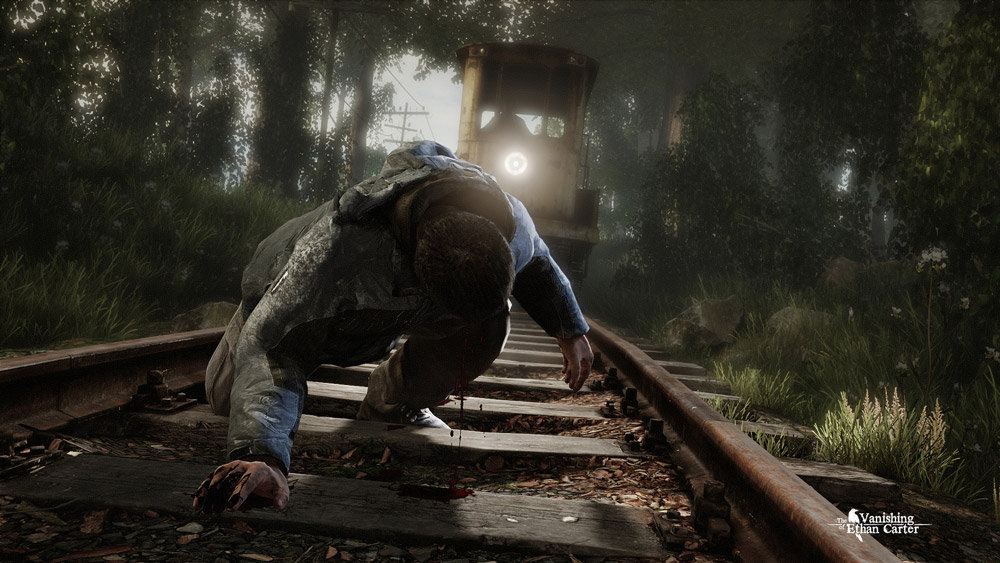TL;DR
The Vanishing of Ethan Carter is an ambitious indie detective game that emphasizes player-driven exploration and atmosphere. Developed by a small Polish studio, it drops you into a mysterious world with no hand-holding, tasking you with uncovering a boy's fate using supernatural clues. While visually striking and atmospherically rich, its PS4 port suffers from inconsistent graphics, a shaky frame rate, and can feel like aimless wandering due to its cryptic nature. If you love a slow-burn mystery and aren't afraid of a challenge, this unique experience might draw you in. Dive into the full review to see if its innovative approach is worth your time.
The indie game The Vanishing of Ethan Carter aspires to be an interactive experience that relinquishes hand-holding. The central question is whether it can sustain player engagement.
Poland has emerged as a significant force in game development. The small studio The Astronauts shares similarities with the early stages of CD Projekt Red, now a major industry player. Like the creators of Witcher 3, they aim to make a significant impact with a small team (only eight individuals contributed to this title) and a modest budget. With The Vanishing of Ethan Carter, they are attempting something that feels almost unique within the current gaming landscape.
The game presents itself as a detective experience centered around flashbacks and an enigmatic atmosphere. It begins with a brief voice-over, introducing you to Paul Prospero – a private investigator contacted by a young boy named Ethan Carter. Ethan requires assistance, his life seemingly overshadowed by a profound darkness. From a first-person perspective, you find yourself in a forest, observing a railway track extending into the woods towards a collapsed bridge. The game offers no initial guidance regarding your location or next steps, and provides no in-game hints. Players are free to explore, examine the environment, zoom in on details, and identify interactive “hot-spots.” Paul Prospero possesses a supernatural ability, enabling him to touch objects and perceive “memories” associated with them. Utilizing this ability, along with astute observation and a desire for exploration, players must piece together clues to uncover the truth about Ethan Carter’s fate.
The Vanishing of Ethan Carter initially launched on PC and has since been released on PS4. The original game was built using Unreal Engine 3. The PS4 version is notable as the first game developed in Unreal Engine 4, promising advancements for future titles. Indeed, at first impression, The Vanishing of Ethan Carter exhibits a stylish and atmospheric presentation that relies heavily on its graphical fidelity (though its substance extends beyond visuals, as discussed later). However, the game doesn’t deliver a consistently impressive graphical experience. This is understandable, considering the small team developing their first game in a completely new engine. The visual presentation is undermined by inconsistent detail quality, rudimentary character models, and a fluctuating frame rate. Fine details such as leaves and textures on metallic and wooden surfaces appear flat and lack depth. The limited number of character models are generally well-animated, but closer inspection reveals primitive facial features, unnatural mouth movements, and an overall character design that doesn’t fully leverage next-gen capabilities. Given the scarcity of characters within the game, greater attention to their design would have been beneficial. The Astronauts implemented a dynamic frame rate, which, in theory, allows the PS4 to render as many frames as possible per scene (audible fan noise indicates periods of heavy processing). This approach facilitates occasional fluidity, reaching a desirable 60 fps. Conversely, the system sometimes struggles to maintain 30 fps, resulting in sluggish gameplay and camera stutter, which is particularly noticeable during first-person movement. If a game cannot consistently achieve 60 fps, a locked 30 fps is preferable, providing a baseline to avoid a jerky visual experience. The developers have announced plans to offer this option in future patches, which is a prudent decision.
The sound design proves to be more consistent and effective. The voice acting is commendable, with the protagonist possessing a fittingly gravelly voice, reminiscent of T Bone Burnett, despite the sparse dialogue. The music effectively establishes an atmosphere conducive to exploration, featuring piano pieces that would serve as suitable background music for office work.
The Astronauts have exhibited courage in their decision to develop a game like The Vanishing of Ethan Carter, and deserve recognition for this ambition. Innovation is essential to avoid stagnation within the medium. However, The Vanishing of Ethan Carter might be excessively ambitious and unconventional. It bears resemblance to the groundbreaking game Myst, presenting a beautiful, strange, and almost ethereal world filled with intricate details, yet sparsely populated with characters and humanity. In the past, players readily embraced the challenge of exploration and experimentation without explicit direction, allowing the narrative to unfold organically. However, gaming has evolved significantly since the early 1990s. At its peak, The Vanishing of Ethan Carter delivers atmospheric, moving, unsettling, and exciting moments. However, much of the experience involves aimless wandering in search of interactive elements, employing trial-and-error to examine every object and explore every area. Given that the plot unfolds through flashbacks, a significant portion of the game involves solitary exploration of a world devoid of living beings or characters for interaction. The experience is akin to arriving at a crime scene after everyone has perished, attempting to reconstruct the events that transpired. Unfortunately, this premise is not as engaging as it might initially seem.
While challenging players is commendable – as many modern games over-explain objectives – The Vanishing of Ethan Carter borders on being overly cryptic. Its supernatural elements further complicate matters, leaving players unsure of their objectives or logical next steps. While perseverance reveals a narrative with its own merits, the game would have benefited from a more substantial initial exposition, a more developed backstory, and some initial guidance.
If you appreciate detective games and enjoy deliberate exploration, puzzle-solving, and a meditative gaming experience, The Vanishing of Ethan Carter might pique your interest with its distinctiveness. Conversely, those who favor action, dialogue, and story-driven narratives will find little to appreciate. We commend The Astronauts’ ambition to innovate, but the chosen execution presents certain shortcomings. While occasionally captivating, exciting, and even unsettling, much of the game feels like aimless searching. Consequently, excitement and fascination give way to boredom and a sense of emptiness. Future endeavors should strike a balance between this approach and a more story-driven, cinematic, and interactive design to potentially create a truly outstanding title. As it stands, it represents a valiant effort, although the impetus to uncover the truth behind Ethan Carter’s disappearance ultimately falls short.





